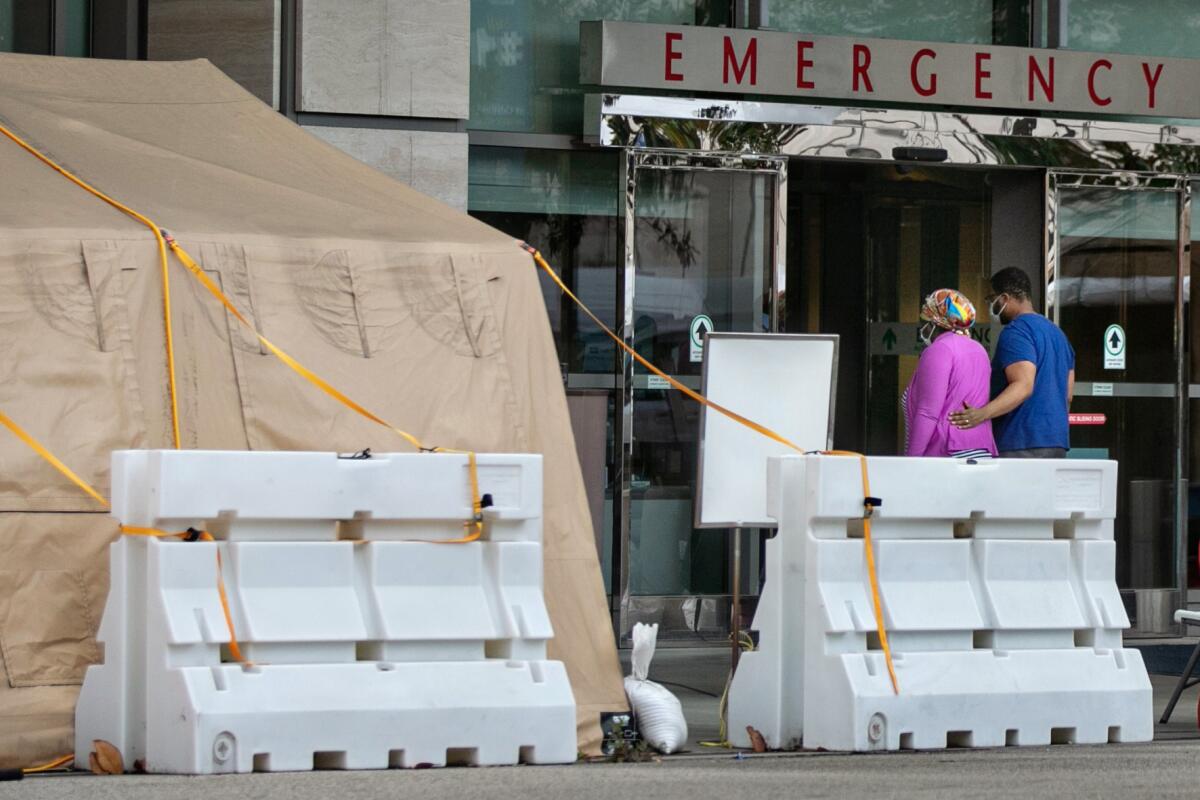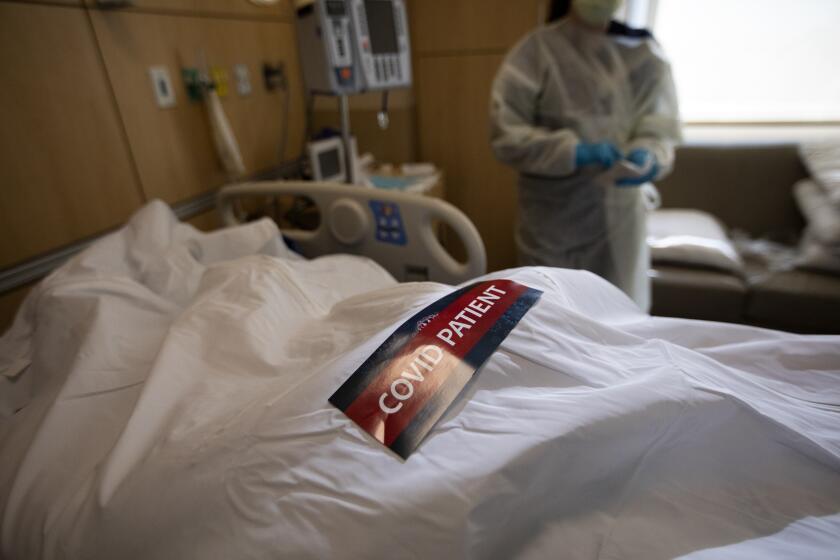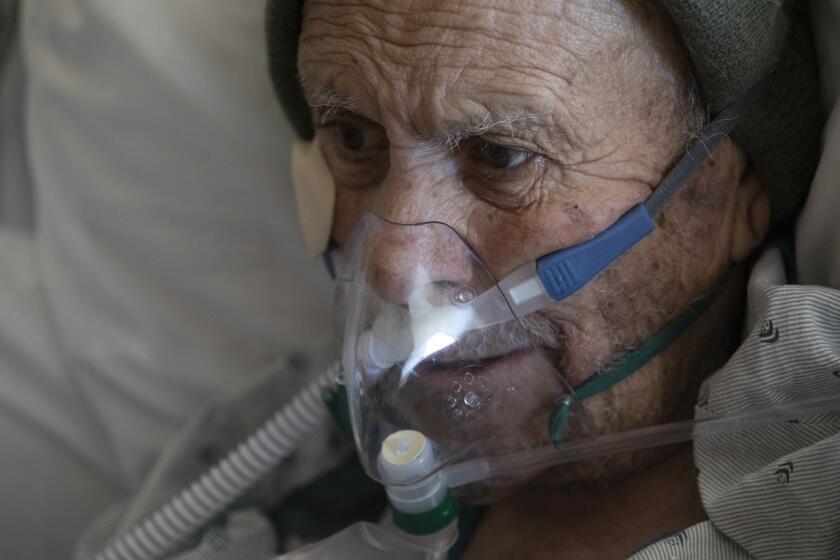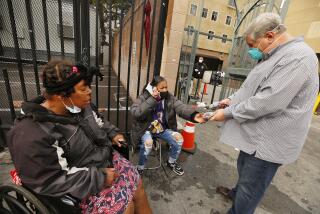L.A. County faces ‘worst disaster’ in decades as coronavirus rages unchecked

The coronavirus is continuing to rampage through Los Angeles County, infecting thousands of people every day and hammering already overworked hospitals with a deluge of new patients — a devastating double blow with deadly consequences.
The impacts of the ongoing COVID-19 surge represent “the worst disaster our county has experienced for decades,” according to Public Health Director Barbara Ferrer, “and, as with other terrifying situations, the end of this surge only happens when more people and more businesses take control and do the right thing.”
Over the last week, an average of more than 200 Angelenos have died every day from COVID-19 — a rate that has pushed the county’s cumulative toll past 12,000.
Behind those dire data points, however, are people whose loss ripples throughout their families, their workplaces and their wider communities, officials note.
“Dying from COVID in the hospital means dying alone,” L.A. County Supervisor Hilda Solis said. “Visitors are not allowed into hospitals for their own safety. Families are sharing their final goodbyes on tablets and mobile phones.”
In some cases, Solis said, the last words dying people hear are their younger family members apologizing for exposing them to the virus.
“It’s a war zone,” said a doctor at one L.A. County public hospital, as the COVID-19 surge brings levels of death once unimaginable in the U.S., despite tireless efforts to treat patients.
After weeks of rapid increase, the number of COVID-19 patients hospitalized countywide stabilized recently at just under 8,000.
While the plateau is welcome, officials caution that it’s too soon to declare the worst of the surge over. The full ramifications of the recent holiday season still remain to be seen, and any growth in the number of new infections will invariably trigger a corresponding increase in hospitalizations.
That’s a bleak possibility, given the stress healthcare systems are already under. Faced with the overwhelming need, some county hospitals have had to set up beds in hallways or gift shops to accommodate the crush of coronavirus-positive patients. Ambulances in some cases are waiting hours to offload patients into crowded emergency rooms.
Systems designed to deliver lifesaving oxygen have been stressed to their breaking point. Problems on Dec. 27 with hospital oxygen systems caused five hospitals in L.A. County to declare an “internal disaster,” which allows a facility to close its emergency room to all incoming ambulance traffic.
“Hospitals are on the brink of triaging care, which means decisions will have to be made on who could receive access to scarce resources,” Solis said.
“The situation,” she emphasized, “is more dire than ever before.”
The demand for oxygen has skyrocketed, as critically ill COVID-19 patients often need high rates of oxygen flowing into their lungs to keep them alive.
Over the last week, officials have reported an average of 14,518 new coronavirus cases per day — equivalent to 10 Angelenos testing positive every minute, according to data compiled by The Times.
And officials are still bracing to see how much travel and gatherings over the recent holidays may have exacerbated transmission.
“This is the time to be extremely cautious and very careful,” Ferrer said during a briefing Monday. “We cannot lighten up our efforts yet — not now, and not for the next several weeks.”
With the coronavirus so widespread, officials said it’s more important than ever for residents to keep their guard up, maintain physical distance from those they don’t live with and wear masks when in public to cut down the risk of transmission.
“The biggest single factor in all of this comes down to individuals taking appropriate action, taking personal steps,” Ferrer said. “We really just need everyone to do the right thing to protect each other so we stop the transmission that’s now occurring in epic proportions.”
More to Read
Sign up for Essential California
The most important California stories and recommendations in your inbox every morning.
You may occasionally receive promotional content from the Los Angeles Times.













